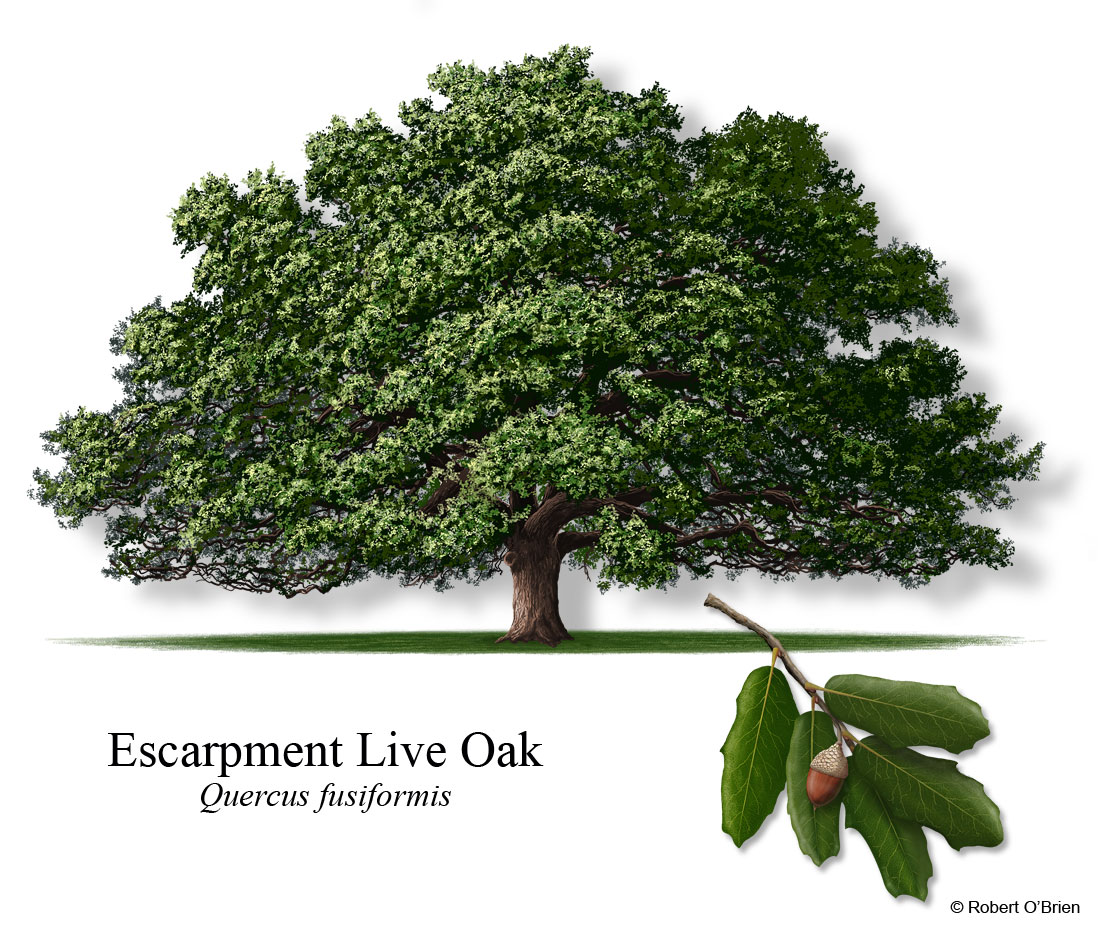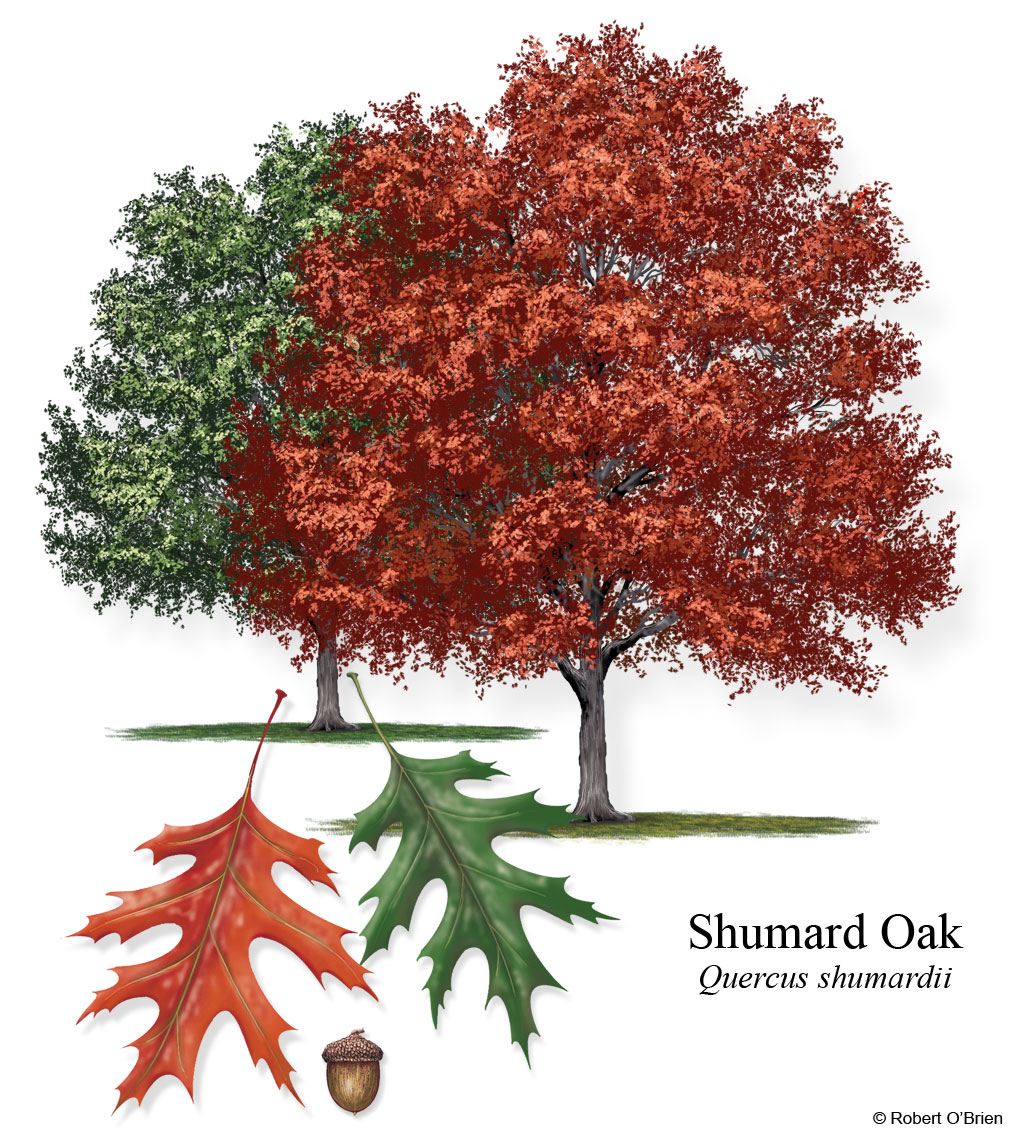Oak Wilt 101

Oak wilt is one of the most destructive tree diseases in the United States, and it is killing oak trees in central Texas at epidemic proportions. Whether you're new to Austin or just getting to know your trees it's important to know the basics, and to know when to call in the professionals to protect your trees.
Illustrations by Robert O'Brien
What is Oak Wilt?
Oak wilt is an infectious tree disease caused by the fungus Ceratocystis fagacearum, which disables the water conducting system in susceptible oak trees. Red oaks (Spanish oak, Shumard oak, and Blackjack oak) are the most susceptible, and play a unique role in the establishment of new oak wilt infection areas. Live oaks are less susceptible than red oaks, but are the most seriously infected species due to grafted root systems that allow the fungus to spread among adjacent trees.
How Can I Identify Oak Wilt?
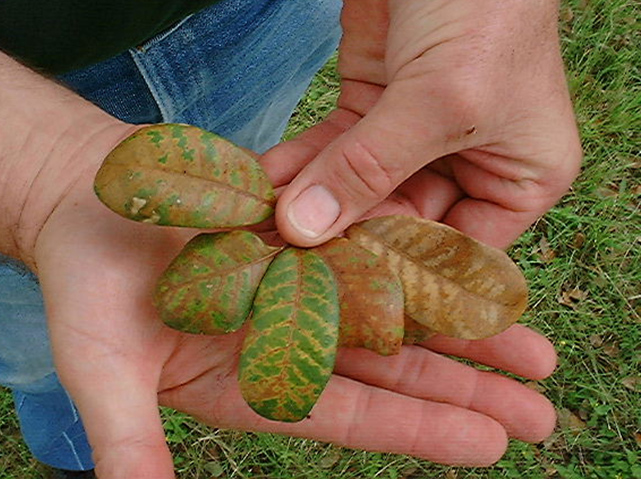
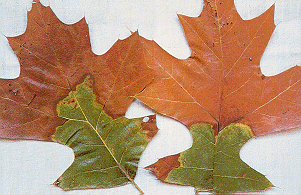
Veinal necrosis is an important symptom of the disease in Live Oaks.
Oak wilt is generally identified in Live oaks by patterns of tree mortality, and the presence of foliar symptoms (veinal necrosis). Foliar symptoms in Red oaks are less distinct, and oak wilt is generally identified by the “flashing” of autumn colors during summer months and/or the presence of fungal mats.
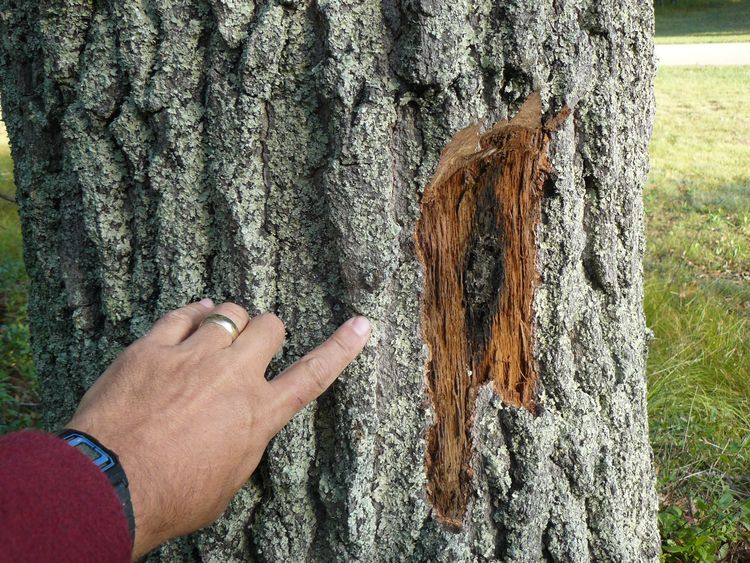
The oak wilt fungus forms spores under the bark of red oaks in a structure called a "fungal mat." Image courtesy Michigan State University.
Fungal mats are spore-producing structures that generally form during spring months on Red oaks that became infected the previous late-summer or fall. Red oaks that become infected during the spring and early summer will generally die due to the extreme heat of central Texas summers, and will not maintain sufficient moisture to form fungal mats the following spring.
How Do Trees Become Infected?
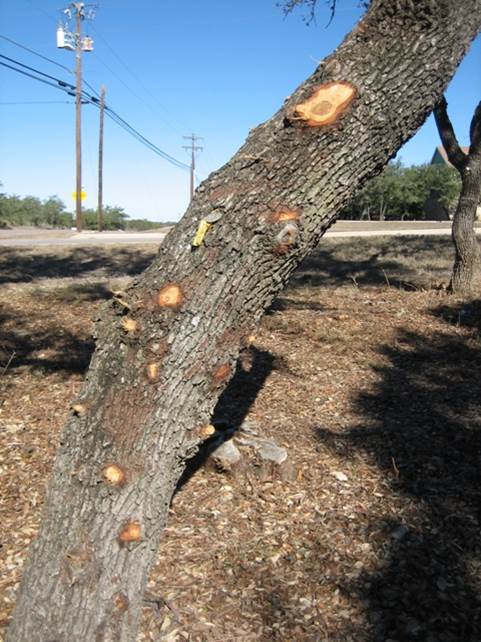
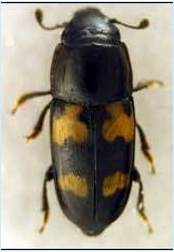
Open cuts on an oak attract the Nitidulid Beetle, allowing them to infect new trees.
Red oaks play a key role in the second method of oak wilt infection. Only Red oaks form fungal mats, and the spores from fungal mats can be transmitted by insect vectors that are attracted to fresh wounds on nearby trees. It is important to recognize that for any given area of oak wilt mortality, the first tree was infected by spores transmitted by an insect vector (generally the nitidulid beetle).

In large populations of oaks, the disease shows a pattern of spreading outward from the original point of infection.
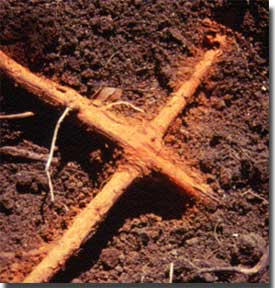
Roots can graft together (connect) underground to spread the disease from tree to tree.
In excess of 95% of the infected trees (generally Live oaks) become infected from grafted root connections, resulting in aforementioned patterns of oak wilt mortality. It is estimated that oak wilt mortality centers can expand 100-150 feet per year as spores are transmitted through inter-connected roots.
How Can I Protect My Trees?
Early detection and prompt action are essential for successful management of oak wilt. If you think you might have oak wilt protect your trees by working with a Certified Arborist with a certified applicator's license to diagnose and treat your trees.
The specific measures taken depend on several circumstances but should include appropriate combinations of the following:
Prevent New Infections
- Cut and dispose of diseased red oaks immediately.
- Avoid wounding oak trees, including pruning, from February through June.
- Sterilize/sanitize all pruning equipment between trees and paint all wounds and fresh stumps regardless of season.
- Handle oak firewood cautiously, burn all firewood before spring, and never store unseasoned oak wood from infected trees near healthy oaks.
Stop Spread through Root Connections
- Install a trench at least 4 ft deep and 100 ft beyond the perimeter of infection centers (last symptomatic tree) to break up root connections.
Inject High-value Oaks with Fungicide
- Identify susceptible, high-value oak trees in proximity to expanding oak wilt infection centers.
- Consult a trained and licensed arborist (with certified applicator’s license) for treatment of susceptible trees with injections of propiconazole (AlamoTM).
Plant Resistant Trees
- Plant trees that are resistant to oak wilt and adapted to central Texas.
- Favor a diversity of tree species.
- Avoid wounding susceptible oaks during planting.
Learn more, Get help and Find a Specialist at Texas Oak Wilt.
Article submitted by Chris Dolan, Oak Wilt Suppression Program Coordinator, Urban Forest Protection Division, City of Austin.
Learn more about The Role of Red Oaks in the Oak Wilt Cycle

This information is sponsored by the City of Austin. Learn more about trees and resources at the Tree Information Center!


